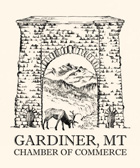During the guiding season, my backpack is my exercise machine and the wilderness is my outdoor gymnasium. Of course, as I’ve long argued, wilderness is much, much more than an outdoor gymnasium: it is the genetic repository of 3.5 billion years of organic evolution, and it has intrinsic value simply because wilderness provides habitat for millions of species, including many species that require undisturbed natural landscapes. But this essay is about physical fitness for humans, and wilderness provides for that, too!
As you might imagine, staying fit is pretty easy during the guiding season. When I have a week in between treks, I usually do two or three light to moderate mostly upper body weight workouts. If I’m going much more than a week in between trips, I’ll add 3-4 weekly half-hour runs around our hilly property. But when guiding season ends, my workouts increase. Although I try to get plenty of cardiovascular workouts by hunting in the fall and backcountry skiing during the winter, I augment these activities with occasional workouts on the elliptical machine. One way or another, I try to get two or three cardiovascular workouts each week. But cardio fitness is just one third of the overall program. The other two areas of emphasis are muscle and joint strengthening (weight resistance workouts) and strengthening of the core. Do not neglect the core! Any professional athlete will tell you that core strength is a vital aspect of overall physical fitness. I also stretch regularly, but I don’t over-do it. But stretching is beyond the scope of this missive. Suffice it to say that you must learn to stretch properly, or you can hurt yourself!
During the off-season, I train with our weight resistance machine about three times each week, for about 30 minutes. I try to work all of the major muscle groups, including arms, shoulders, quads and hamstrings. For healthy knees, do not ignore the hamstrings! Which brings us to the core, my least favorite part of the routine — but essential nonetheless. Confession: my entire core workout consists of exercises I have learned over the years from qualified physical therapists to help control pain from various injuries incurred on the football field, in the wilderness, and, I am ashamed to say, off the bar-stool. Never mind the specifics. Let’s just say that my frontal lobe was slow to develop. For example, in my early guiding years, I thought nothing of carrying an extremely heavy pack loaded with unnecessary luxuries. But I digress. My point is, don’t ignore the core, but learn how to do it right, from a professional.
In fact, that’s good advice for fitness in general. At least begin your program with a professional trainer or physical therapist, as the case may be. Learn to do it right, and the benefits will befit you for life!



